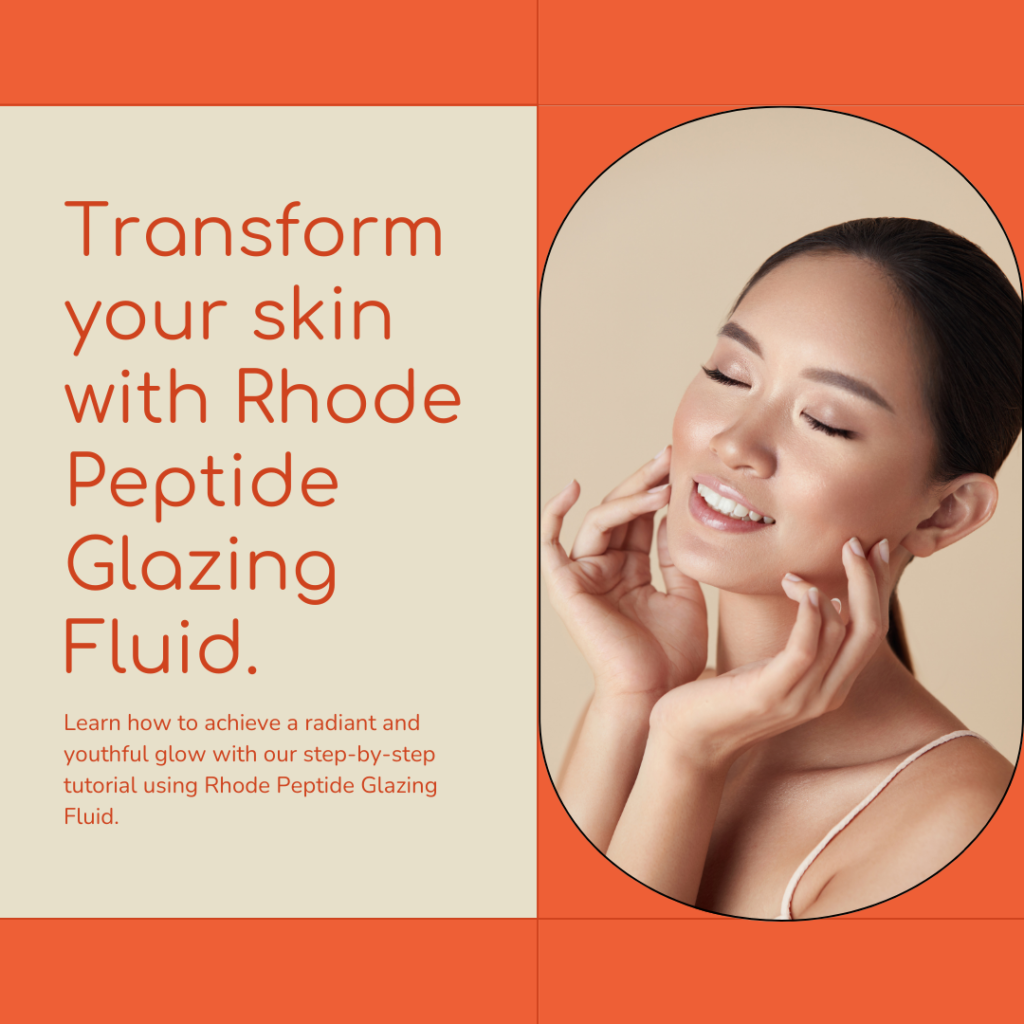Do you want to achieve a glazed skin look that’s hydrated, plump, and glowing? If so, you might want to try the new rhode peptide glazing fluid, a product created by Hailey Rhode Bieber and her team of dermatologists and chemists.
This fluid is packed with peptides, ceramides, and polysaccharides that nourish your skin barrier and give you a dewy finish. In this post, I’ll show you how to use it in four easy steps.
How to Achieve Glazed Skin with Rhode Peptide Glazing Fluid Step-By-Step
To get the glazed skin effect, you need to do these steps.

Step 1: Prep Your Skin with Glazing Milk
Before applying the peptide glazing fluid, you need to prep your skin with glazing milk, which is the essential first step in the rhode skincare routine. Glazing milk is a watery essence that hydrates your skin and protects it from pollution with zinc and copper.
To use it, simply shake the bottle well and apply a few drops to your palms. Then, gently press the glazing milk onto your face and neck until it’s fully absorbed.
Step 2: Apply the Peptide Glazing Fluid
Now that your skin is prepped, it’s time to apply the peptide glazing fluid. This is the star product of the rhode line, as it gives your skin a glazed look that’s not greasy or sticky.
To use it, squeeze a pea-sized amount onto your fingertips and smooth it over your face and neck. You can also pat it gently to enhance absorption and plumpness.
Step 3: Lock in the Moisture with Barrier Restore Cream
The third step in the rhode skincare routine is to lock in the moisture with barrier restore cream, which is a rich recovery layer for your skin. This cream helps to repair your skin barrier and soothe any irritation or redness. It also has a subtle vanilla scent that’s relaxing and comforting.
To use it, scoop a small amount with the spatula provided and warm it between your palms. Then, massage it onto your face and neck using upward strokes.
Step 4: Add Some Color with Peptide Lip Tint
The final step in the rhode skincare routine is to add some color to your lips with peptide lip tint, which is a tinted lip layer that also treats your lips. This lip tint has shea butter, cupuaçu butter, and peptides that hydrate and plump your lips while giving them a natural flush of color.
To use it, swipe it directly onto your lips or apply it with your finger. You can choose from four shades: vanilla treat (clear), strawberry glaze (pink), peachy keen (coral), or cherry bomb (red).
And that’s it! You’ve just completed the rhode skincare routine and achieved a glazed skin look that’s healthy and beautiful. I hope you enjoyed this guide and found it helpful. If you did, please share it with your friends and leave a comment below. And don’t forget to check out the rhode website for more information and products.FAQs
Q: Do you use rhode peptide glazing fluid before or after moisturizer?
You use rhode peptide glazing fluid before moisturizer, as it is a serum-gel that delivers hydration and glow to your skin. You can also use it on top of makeup or throughout the day for a quick refresh.
Q: What does rhode glazing fluid do?
Rhode glazing fluid is a product that gives your skin a glazed look, which is hydrated, plump, and glowing. It contains peptides, ceramides, and polysaccharides that nourish your skin barrier and give you a dewy finish.
Q: How much does rhode peptide glaze cost?
Rhode peptide glaze costs $29 for a 30 ml bottle. You can buy it from the rhode website or from selected retailers.
Q: Is Rhode Skin available in the UK?
Yes, Rhode Skin is available in the UK. You can order it from the rhode website or from Cult Beauty, which is an authorized stockist of Rhode Skin products.
Q: What are the benefits of peptides for the skin?
Peptides are short chains of amino acids that act as building blocks for proteins in the skin, such as collagen and elastin. Peptides can help stimulate the production of these proteins, which can improve the firmness, elasticity, and smoothness of the skin. Peptides can also help reduce the appearance of wrinkles, fine lines, and sagging.
